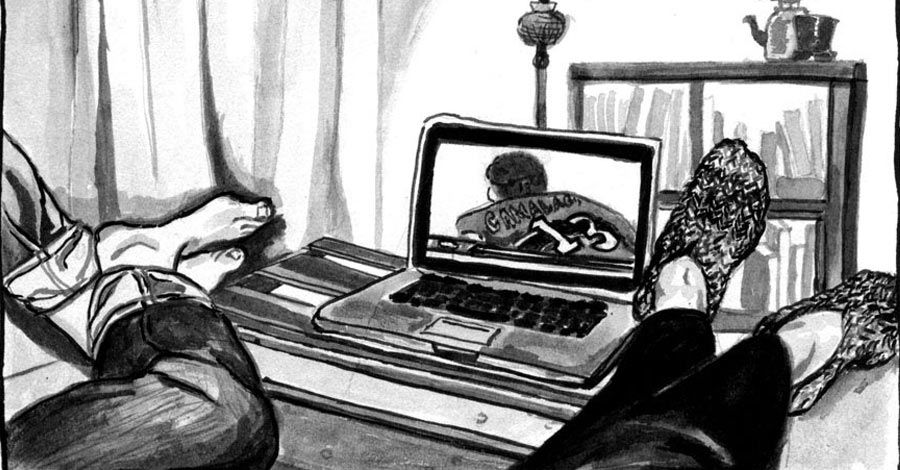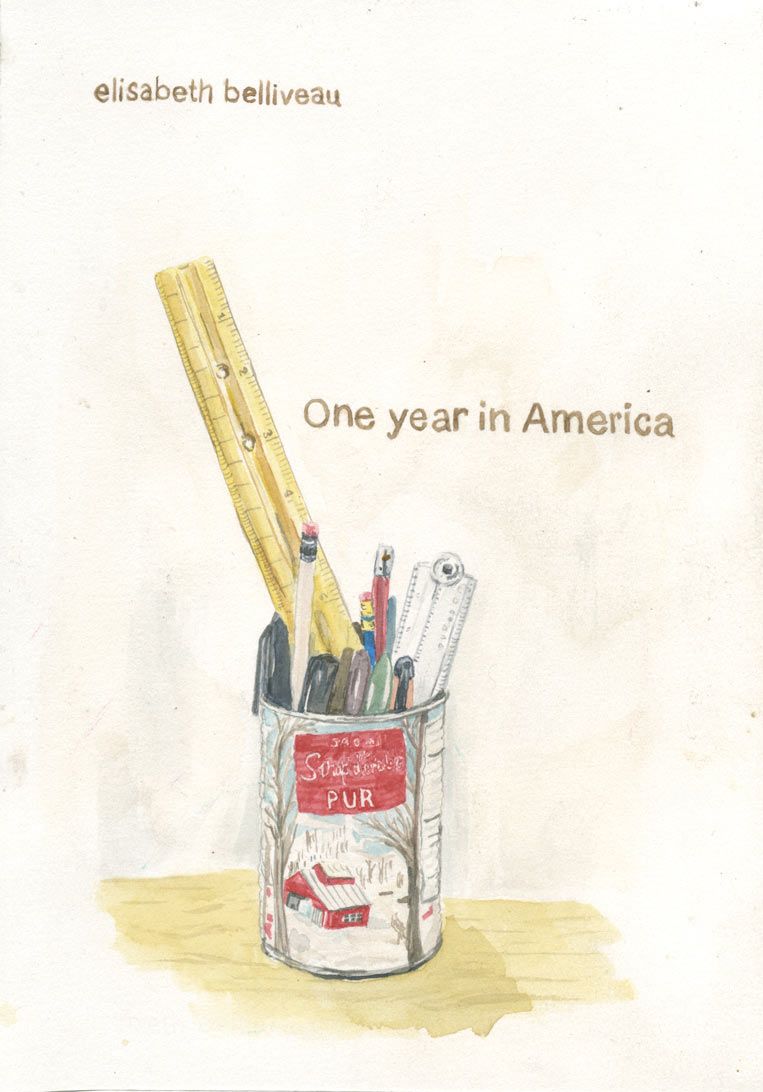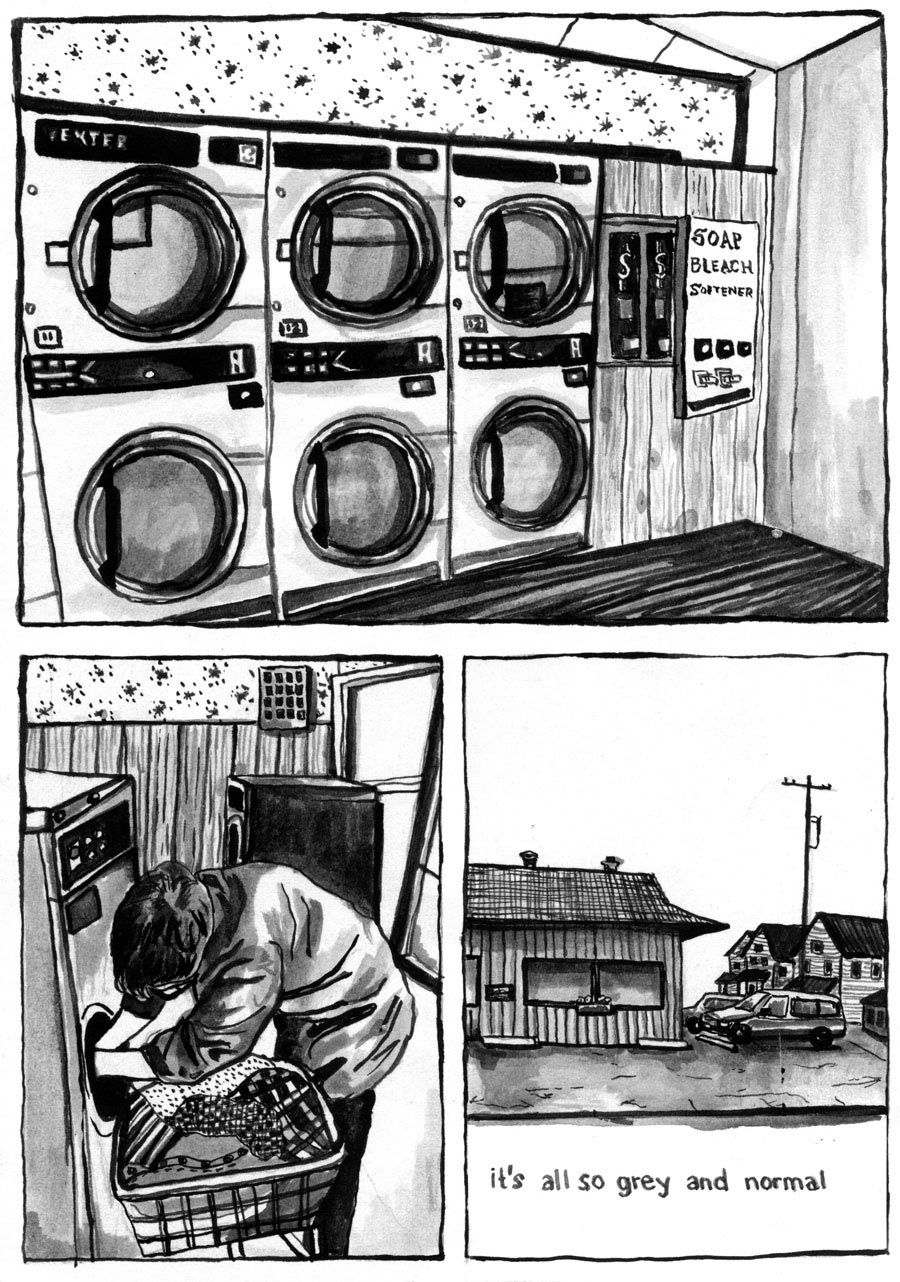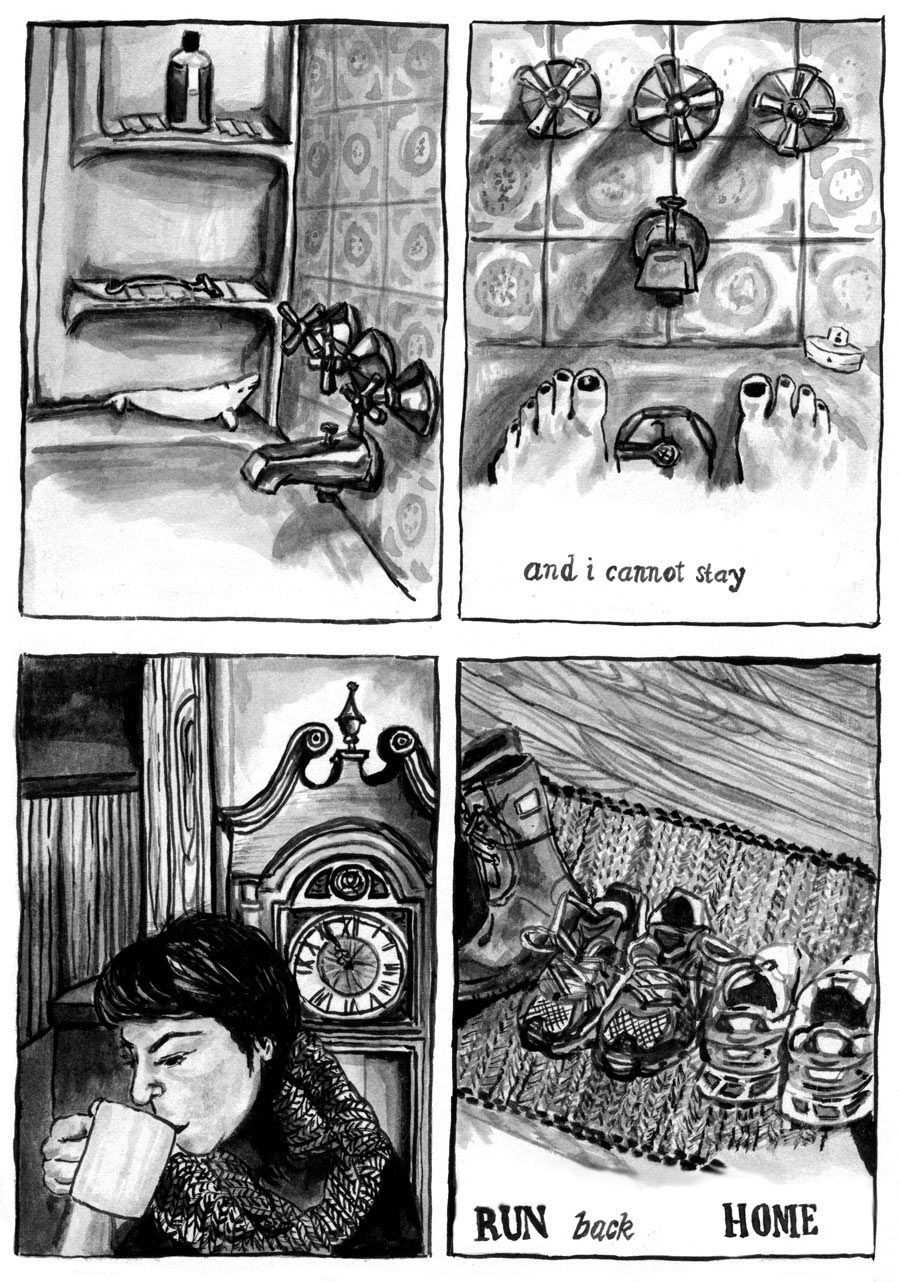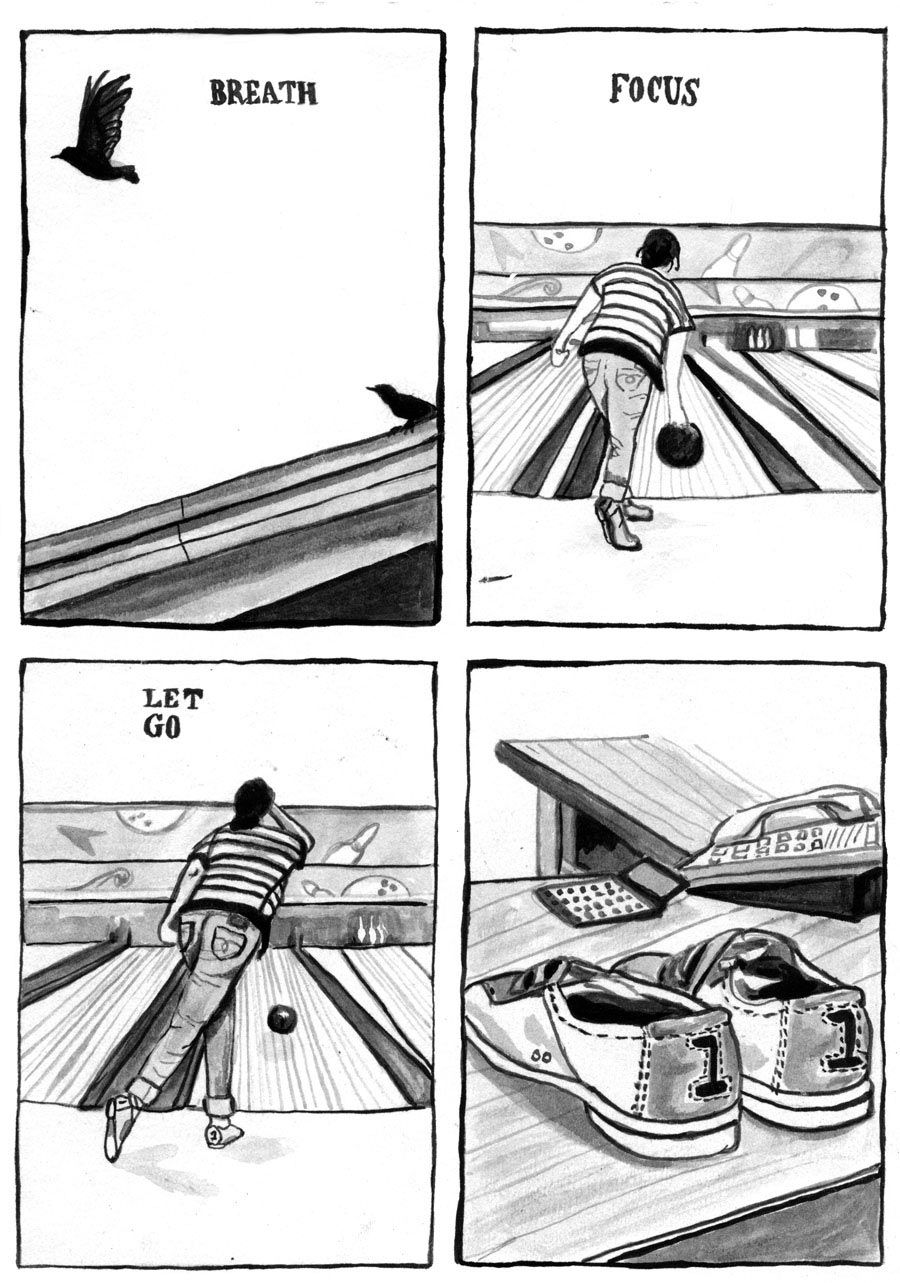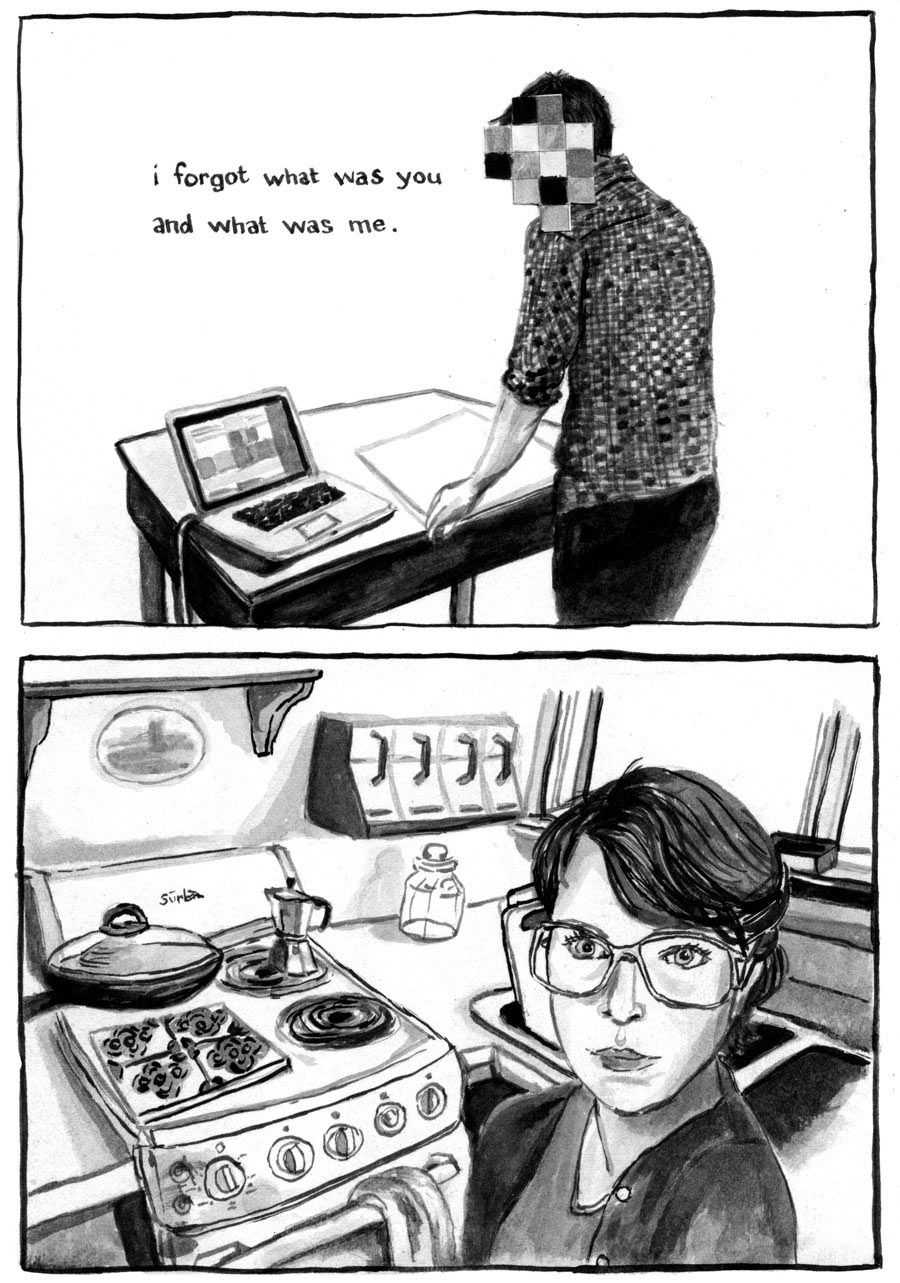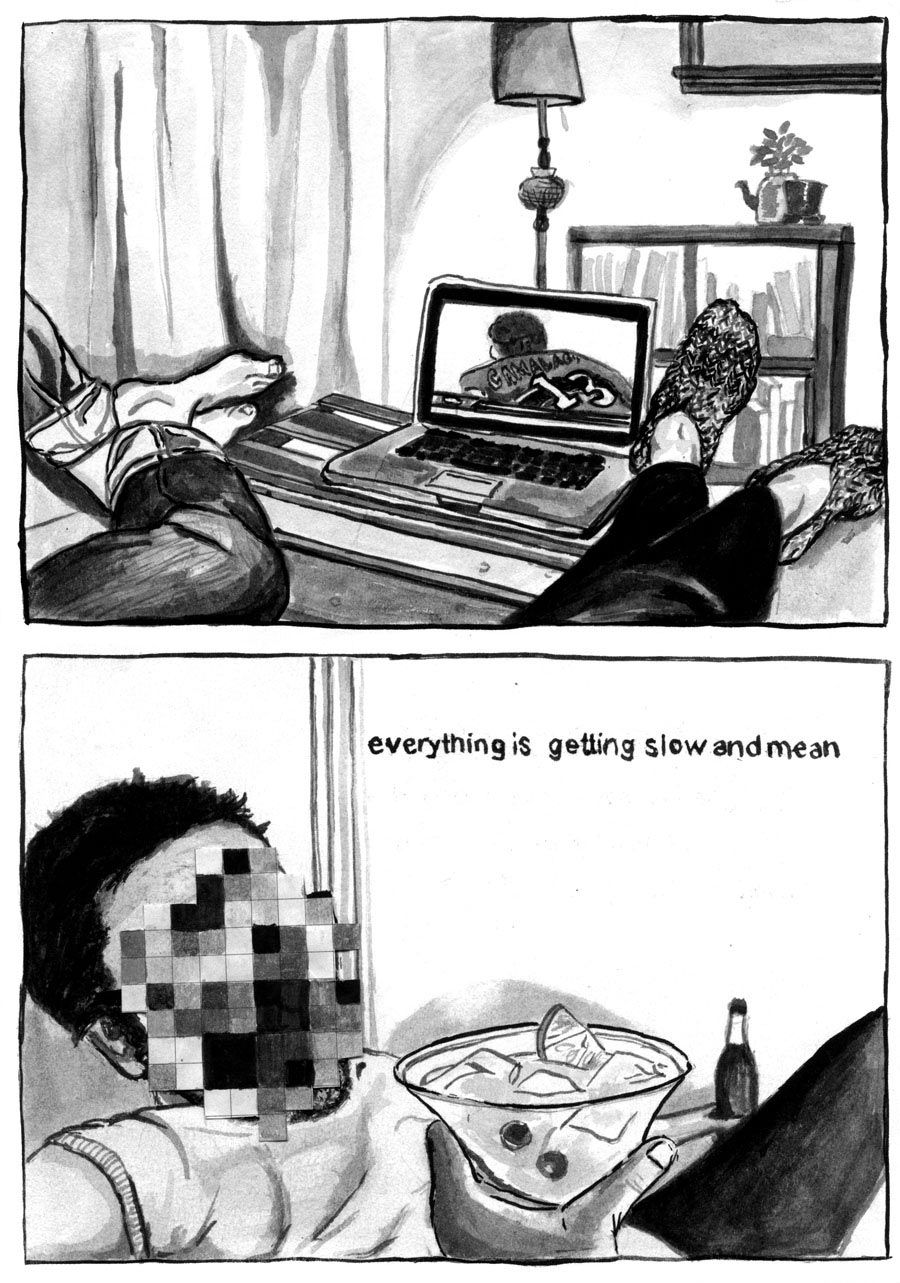At some point in our lives, we all stare adulthood in the face. Whether it's when we graduate from school, start a career or establish and grow a mature relationship, meeting responsibilities while still pursuing personal ambitions and expression is a life-long balancing act, and it's never more precarious than when it is newest to us.
Elisabeth Belliveau remembers that time and that uncertainty and shares it with readers in her new graphic novel, "One Year in America," from Conundrum Press, which chronicles a year in the Canadian creator's life. Mixing comic book illustrations with adapted text from actual emails, the resulting story takes readers inside the emotions of her journey.
Belliveau took time out of a busy schedule (she teaches art and recently had gallery showcase of her artwork) to speak with CBR News about capturing the heart of the moment, trying to live with the choices we make, and how not all books need to be read linearly.
CBR News: Elisabeth, "One Year in America" is very impressionistic, giving readers fleeting moments rather than personal, specific details. Even the names have been redacted from emails, where people are referred to their first initial. Why did you opt for that approach and what inspired it?
Elisabeth Belliveau: The main text is based on excerpts of emails between my friends and me over a two-year period. Most of the emails are about relationships and anxiety -- things that are both personal and universal. I wanted to show the emails as they were and be true to the tone, the way we really talk to each other. My friends gave me permission to use the emails, but I didn't feel it was necessary to identify them. I thought using initials (that aren't accurate) would make the characters anonymous while maintaining the intimacy and authenticity of the experiences. At the same time, I gotta say -- "It is a work of fiction, and any characters, events etc. are products of the author's imagination. Any resemblance to actual persons, living or dead or actual events is purely coincidental."
Of course! Your storytelling choices keep the reader at a distance from the actual characters, but allow the experiences to filter through clearly. Is the goal that the reader invests more of him/herself into the events of the book?
I hope it is relatable to readers; for me it was about sharing experiences of negotiating life after graduate school, divorce and choosing where and how to live. I am always looking for stories, examples and models that inspire, console or comfort me. In my book, I tried to articulate insights and glimpses of intimate moments of daily life -- maybe things to laugh about, to feel like it is gonna be okay about. I don't think the book has to make sense or be read cover to cover; it's a world that you can drop in on and get a sense of.
The book chronicles a year in its protagonist's life, marriage and divorce, traveling and life abroad. These are fairly universal themes, whether lived or second-hand, yet you seem to be asking the reader to reconsider their experiences and biases about them. Is that fair to say?
A lot of people around me seem to have fabulous lives of travel, marriage/relationships and careers and I am forever taught that things are never as easy as they seem. I think it is useful to be honest, to share our experiences and support each other -- to talk about how things really work (out). I am really thinking about women my age -- mid-30s, in the arts, making choices about family, career, etc., andtrying to enjoy their lives. It's a new time, and the stakes are high. I want more stories about this -- more wisdoms and anything that helps to feel like you're not alone and making every bad decision in the world. [Laughs]
Of all possible events, what makes Katarina Witt's "Playboy" pictorial the launching point for this journey?
A figure skating theme runs through the book -- maybe it is the narrative's main continuity (and a big part of my life).I was thinking about female role models, and Katarina Witt was a significant one for me. It was confusing as a kid to learn what "Playboy" magazine was, and then to learn that Katarina was in it. I remember crying and worrying that she was super poor and that evil people had taken advantage of her -- I was probably 11 years old! I couldn't understand why someone would want to pose nude -- it seemed really demeaning and embarrassing. Figure skating became creepy all of a sudden, and I was scared of growing up into a woman. In terms of how feminism, empowerment, body image, career, identity, success and all thatgo, she seemed like a significant figure for me in terms of sparking questions and understanding the power and complexities of women's lives and how they are perceived.
I love the idea of experiencing the culture of a location through its bumper stickers. When did that motif manifest itself in "One Year in America?"
I spent time in upstate New York, in a town that was super hippie, yoga-filled and had an Ivy League university. People I met were very forward with their political opinions -- and it felt a bit intense compared to the how communities I was more familiar with in Canada expressed themselves. It made me really aware that I was from somewhere else. The creativity and specificity of the bumper stickers would vary from town to town -- also, I had to spend a lot of time in a vehicle, which is unusual for me.
I also like that the husband's face is pixelated. It feels like partly an attempt to erase him from the picture, partly an attempt to preserve his anonymity. By turning him into a non-entity, you focus the book on the protagonist's life with and beyond him, and you ask the reader to consider her perspective more thoroughly. Anything to that theory?
The pixilationwas a solution. When I first started the book I was married and my plan was very different. By the time the book was complete, I was divorced and I wanted to keep the work but had to make the husband character anonymous. I kept thinking about the book like a paper computer -- it seemed pretty suitable to use a digital-inspired hand painted pixilation blob to mask an ink drawing.
Looking over your website, you have drawings, sculptures, animation and more. Was tackling an extended book project a bigger challenge? Or just a matter of using creative muscles differently?
I have a few other books but they are free-form collections of drawings, short stories and writing. This time I wanted the challenge of exploring a more structured form. My previous books are not easily classified -- they aren't quite graphic novels or artist books, they are a bit like sketchbooks -- I have had to think about what a graphic novel is and is not.
With all your other projects and your teaching, how did you find time for "One Year in America," and how long did it take you to write and draw the book?
It took two or three years to make the book; I only worked on it in spurts and didn't have a plan. During those years, I was teaching full-time, working on new stop-motion animations and having art shows. Mysteriously and thankfully, Andy Brown at Conundrum Press contacted me to ask if I had any new book ideas and I realized that I had accumulated a lot of drawn pages with book potential. It felt really satisfying to organize these images and writings as a record of a time and let it go.

